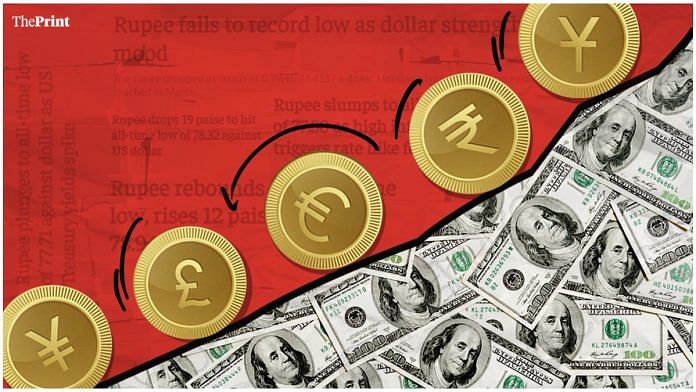In 2022, the International Monetary Fund revisited its advice to member countries on capital flows, particularly regarding restrictions. This rethink was driven by a variety of reasons, including the experience of economic recovery and financial stability concerns following the global financial crisis.
Besides capital, the other source of foreign reserves for several low-income and developing (middle-income) economies (LMICs) includes remittances. In 2023 alone, global remittance flows were $860 billion, out of which $669 billion were to LMICs or 1.7 per cent of their GDP.
Needless to say, just as capital flows aid in import coverage for countries with persistent current account deficits, the same also holds true for remittances. A further breakdown of these flows by regions shows that in 2023, remittance inflows grew by 8 per cent for Latin America and the Caribbean, by 7.2 per cent for South Asia, by 3 per cent for East Asia and the Pacific, and by 1.9 per cent for Sub-Saharan Africa. Such flows are less volatile and therefore instrumental in building buffers against large external shocks. This is particularly true at times of heightened uncertainty as well as when several countries could potentially be vulnerable to balance of payment challenges.
Also read: India again received world’s highest remittances in 2023, double that of China, finds report
The challenge of high transaction cost
While the importance of remittance flows is well recognised, the challenge of cost associated with such transfers remains. Transferring funds from one country to another is a transaction that involves several financial institutions, and at various stages of this transaction, each institution adds a cost. By the time the remittance reaches its destination, there is a substantial transaction cost that has to be borne. This cost is in exchange for the facility of transferring money from one country (and currency) to another.
The United Nations included a target for remittance cost reduction in the Sustainable Development Goals (SDGs). The target, put simply, meant that the average cost of sending $200 should be less than 3 per cent by 2023 and for amounts greater than $200, it should not exceed 5 per cent.
There has been some progress on this front as the Republic of Korea and Saudi Arabia have met the objective of reducing remittance costs to 5 per cent. However, the average cost remains among the highest in Sub-Saharan Africa at 7.9 per cent.
There are a total of 29 countries for which inward remittances are greater than 10 per cent of their GDP; of these, remittances for 12 countries are greater than 20 per cent. At the present global average cost of 6.2 per cent, the high transaction cost amounts to an additional tax on cross-border movement of incomes. For 2023, this translates to roughly $41 billion spent on just transaction costs. This figure is only expected to go up given that remittances are likely to grow on an annual basis. It is, therefore, important to recognise the opportunity costs associated with such transaction costs.
A reduction in this cost could potentially allow relatively smaller economies to use them to build their own reserve buffers and a more resilient economy. It could also reduce the dependence on the IMF’s special drawing rights (SDRs) for small requests of $1-3 billion loans to tide over balance-of-payment situations. This could free up additional funds, which could otherwise be spent on other challenges such as climate mitigation and adaptation.
Also read: India’s UPI & Singapore’s PayNow launch a real-time link for cross-border payments
Indian solution to a global problem
There has been a recent push by India at the World Trade Organization (WTO) in this regard, with a paper submitted in October 2023 that explains some of these issues from an Indian perspective in some detail.
There will be substantial welfare effects from a reduction in transaction costs; the issue, however, is how to achieve the same. India is officially seeking a commitment from trade ministers on the reduction in costs of remittances at the 13th WTO Ministerial Conference in Abu Dhabi. Most of such services had a higher cost associated with them in the past, partly due to the given technology and its constraints. However, times have changed, and there have been numerous advances in digital public infrastructure that have illustrated a low-cost mechanism for cross-border flows.
Cost reduction would have to come from the removal of additional financial institutions, which leads to a more efficient transfer of funds from one institution to another, irrespective of the country of either of those institutions. However, this would mean that a transition to a lower-cost mode of remittance flows could potentially come at the expense of some institutions. There are several innovative ways through which alternative pathways can be designed to facilitate cross-border remittance payments, which could bring different institutions onboard.
India’s recent initiative to deploy its digital public infrastructure (DPI), particularly the UPI, to allow cross-border payments demonstrates the possibility of a low-cost remittance mechanism that can be readily deployed. Such infrastructure could be developed by large remittance-receiving countries for bilateral settlement as an alternative pathway for remittance flows. However, this risks further fragmentation of the global financial system.
A better alternative would be to have a similar initiative at a global level, with investments in developing similar global digital public infrastructure that can be deployed for a unified payments interface that would allow seamless settlements of remittances at a lower transaction cost. In an ideal world, this would not have been a problem given the strong economic case in favour of the same.
Karan Bhasin is a New York based economist. He tweets @karanbhasin95. Views are personal.
(Edited by Prashant)



